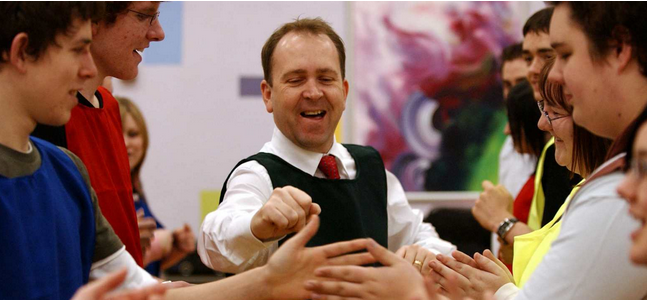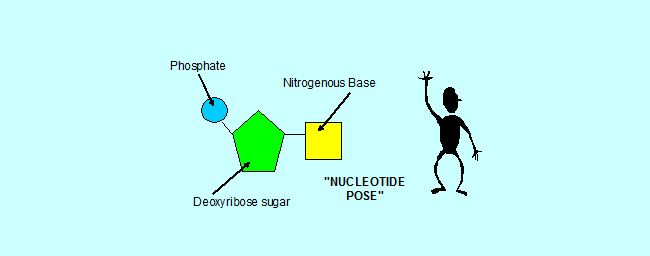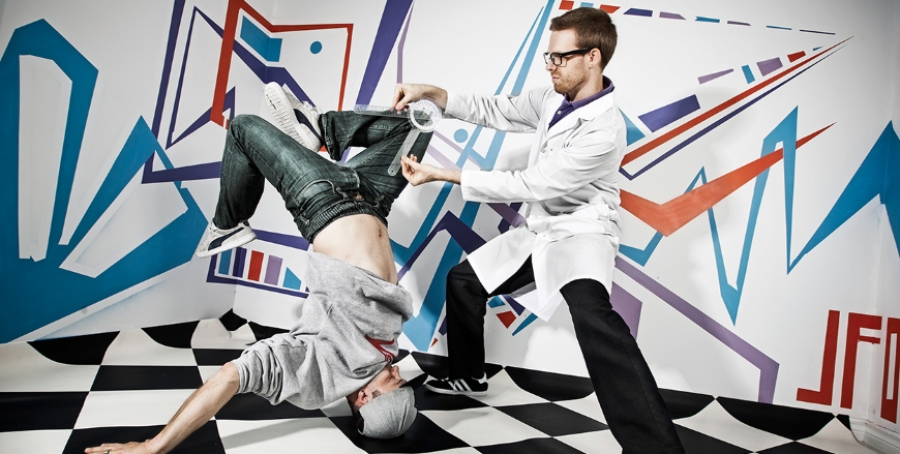My first biology dance evolved after a lesson on mitosis. I’ll never forget the moment when - after experiencing the theory, a video, computer animations, root tip squash practical and simulation using pipe-cleaners – a student declared "I still don’t get it!” I started to explain the stages of mitosis using my hands and fingers to simulate the movement of the chromosomes during cell division and concluded “It’s a bit like a dance”.
As I walked home that evening, mulling over mitosis, my student's comments and the hand actions, I thought to myself "This is not just a bit like a dance - it is a dance!" Rummaging through my CD collection, I found a suitable piece of music to set the actions to and "The Mitosis Mamba" was created. Students enjoyed performing the actions and they found it much easier to visualise the stages of mitosis then they could have done without the Mamba. A question on the stages of mitosis came up in the summer exams, and students squirmed in their seats as they re-enacted the stages of cell division! Following the success of this activity, I’ve developed other dances: The Meiosis Square Dance; Meiosis in Minute; Nerve Dance Latino; The DNA Boogie; and Aerobics Respiration.
Do students join in the dances willingly? Of course! Not only are the dances great fun, students soon realise their value. I’ve lost count of the number of times students have told me they didn’t fully understand a process or pathway until they danced it out, or the number of times students have come out of an exam and told me how much a dance had helped them with recall.
Audiences have joined in biology dances at presentations, conferences and venues from Sunderland in the north to Broadstairs in the south. In March 2011, as part of Science in Norwich Day, members of the public were taught the DNA Boogie and danced it in the street. The Mitosis Mamba has taken me to science festivals in France, Germany, Belgium and Denmark as part of Science on Stage, a European Festival of Science. This has generated further interest from teachers across Europe, with dance instructions translated into Swedish and Dutch. Last year I was nominated to appear on Ashley Banjo’s “Big Town Dance” Show on Sky 1 and chose to show Aerobics Respiration to Diversity as part of my audition! When I say ‘show’, I should really say ‘involve’ because the dances are all about audience participation. The dances haven’t gone ‘street’ yet, but I’m open to new ideas!
Someone once called Boogie Biology an example of ‘edutainment’. I don’t know if that was meant as a compliment or an insult; I do know that the dances are simple, fun and that they work!

- “Mitosis Mamba” involves a set of hand and arm actions to explain and revise stages of mitosis.
- “DNA Boogie” involves actions to learn structure of a nucleotide, how nucleotides join to make single stranded DNA and a dance line-up to explain how the two single strands join to make the famous DNA double helix (see figure 1 for full instructions, and accompanying video).
- “Meiosis in a Minute” is dance for students to do in pairs, demonstrating the key events of the first and second meiotic divisions.
- “Aerobics Respiration" uses hand and arm actions, group formations and a lineup to help students to remember the key events during glycolysis, Kreb’s Cycle and oxidative phosphorylation. This dance can be extended to explain how anaerobic respiration differs from aerobic respiration.
- “Meiosis Square Dance” is a ceilidh-style dance to help students to understand the behaviour of chromosomes and chromatids during meiosis. This dance can be extended to demonstrate non-disjunction and how this leads to polysomy and polyploidy.
- “Nerve Dance Latino” involves simple shape formation to help students to remember the structure of a sensory neurone.
DNA Boogie

“Blame it on the Boogie” (Jackson Five)
- Each student adopts the “nucleotide” pose to the music.
- Sing-a-long to the music, acting out parts of the nucleotide – “phosphate, sugar, base – nucleotide.
- Students from two lines facing opposite directions (antiparallel single strands) and nucleotide pose once more.
- Individual nucleotides join to form single stands by forming phosphodiester bonds: each student (nucleotide) places their right fist (phosphate) on the right shoulder (sugar) of the student (nucleotide) in front.
- The two single strands then turn to face each other, and complementary strands hydrogen bond (clap hands) to make the DNA Double Helix.
- Shout “Adenine – Thymine” and “Cytosine- Guanine”
- Join hands with student to the left and right of the student opposite to form the double helix.
- Spin the helix.
- Repeat nucleotide pose, complementary base-pairing and hydrogen bonding.
DNA Double Helix

Do you go about using dance moves in the classroom? If so, tell us about it in the comments!


















